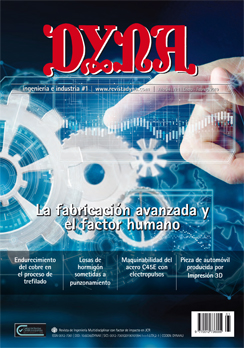DETERMINATION AND SOLUTION TO THE STRUCTURAL FAILURES IN A URBAN BUS
Keywords:
Fallas Mecánicas, Métodos Experimentales, Métodos Numéricos para análisis de esfuerzos, Estructuras automotrices, Mechanical failures, experimental methods, numerical methods for stress analysis, automotive structures.Abstract
The origin of an automotive structural mechanical failure can be originated by diverse causes, due for example to the structural geometry, the materials of manufacture, the processes of manufacture and the mechanical loads, that appear during the time of service for the that were designed, among other causes. The determination of the mechanical causes that provoke such failures is not a simple task, so it is recommended to apply systematic methods that allow identifying and characterizing them efficiently. Currently, there are experimental and computational tools, which can be used of an integral way to assess failures, locate them and give them a practical solution. In this article an efficient method is presented, which was used to identify and quantify the causes that originated mechanical structural failures (generated by cracks) in a bus. Through a numerical method, was searched for and found the solution to the problem, which was implemented and evaluated. The method integrates experimental and numerical tools for the analysis of stresses and deformations (photoelasticity and electrical extensometry) required for the study of failures. Static tests (torsion and flexion) and braking, curving and travel tests were carried out, with the purpose of obtaining data of stresses and strains that would allow evaluating the mechanical conditions of the bus. The load conditions of the tests were a Gross Vehicle Weight (PBV) and PBV + 20%. To carry out the road tests, only the information of the edges and potholes was considered, since they turned out to be the events that caused the highest levels of stress. The study was carried out on a prototype bus, which did not present structural mechanical failures. The case study presented in this paper refers to finding the causes and the solution to a problem of a failure by a fissure located on the floor of a bus. Finally, the results obtained show the efficiency of the proposed analysis method as well as the integration of the experimental and numerical tools used, in a systematic and integral way identifying the causes that originated a failure in the structure of the bus. Keywords: Mechanical failures, experimental methods, numerical methods for stress analysis, automotive structures.Downloads
Published
2019-01-01
Issue
Section
ARTICULOS

